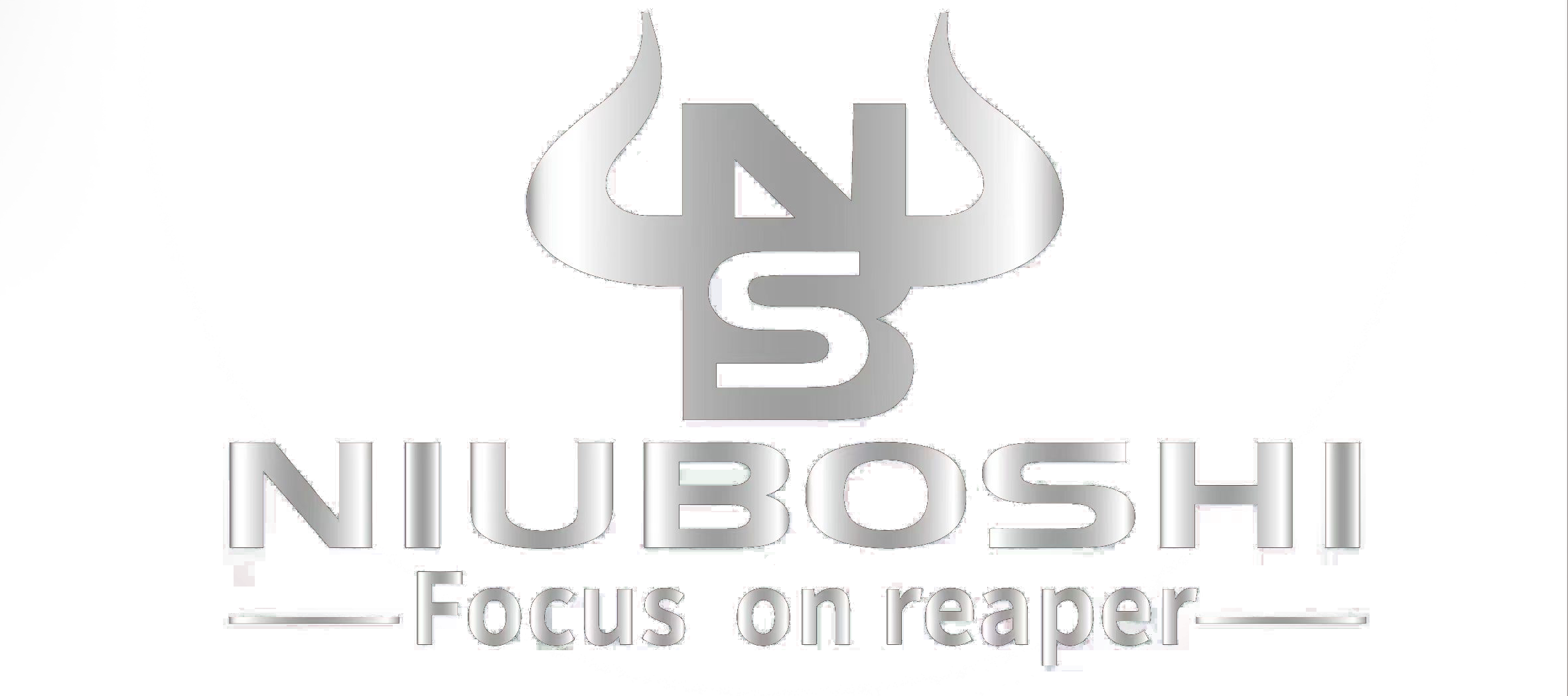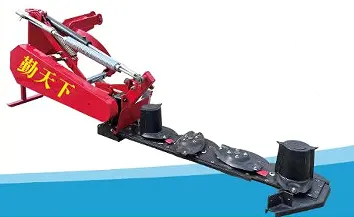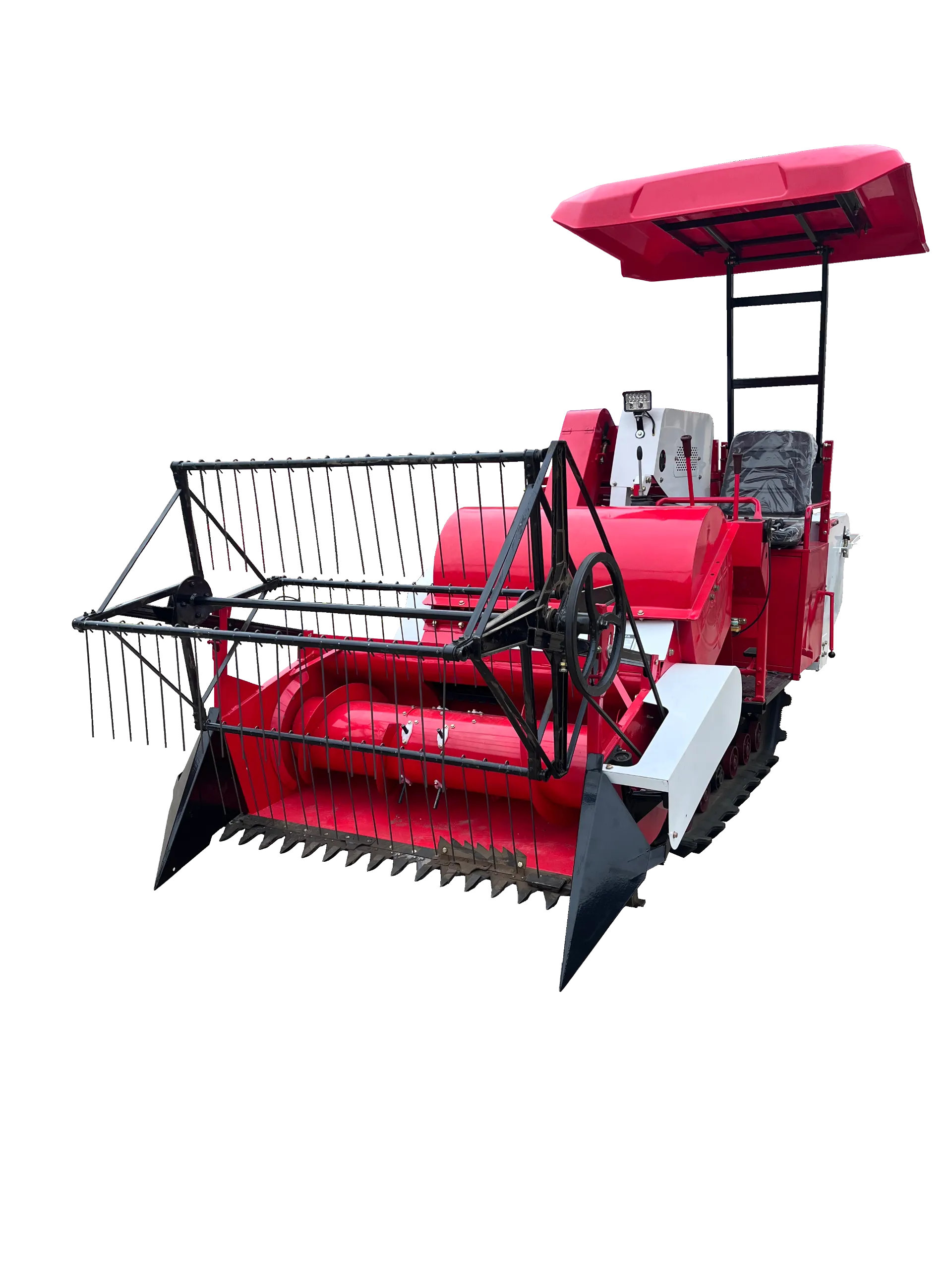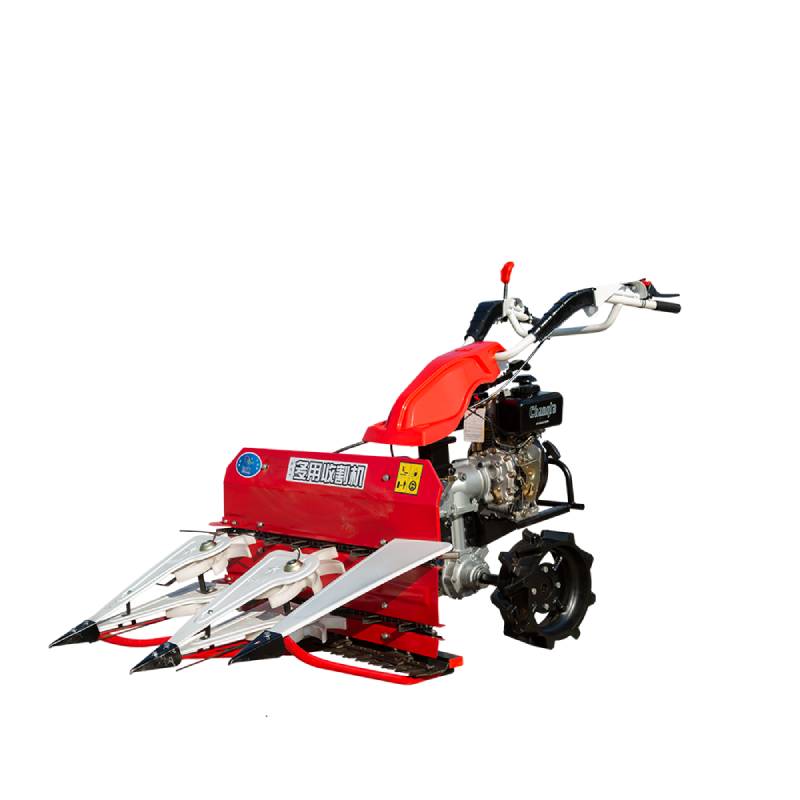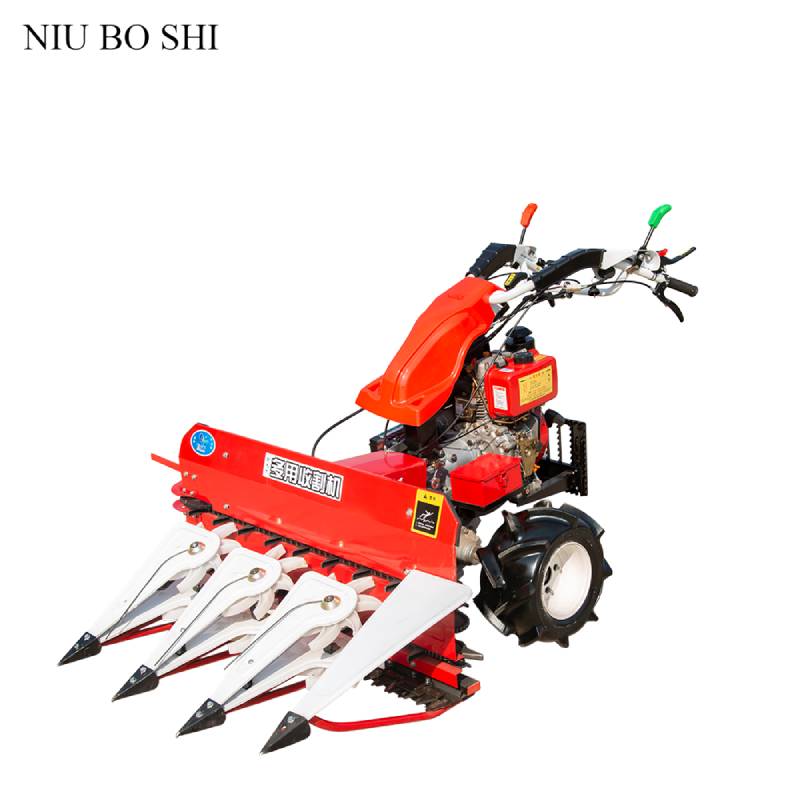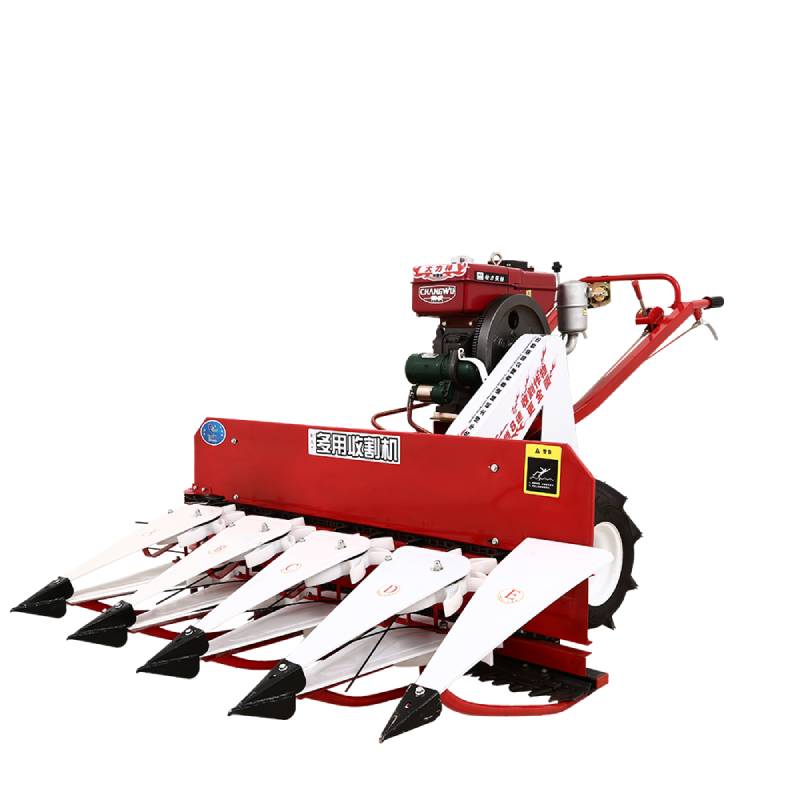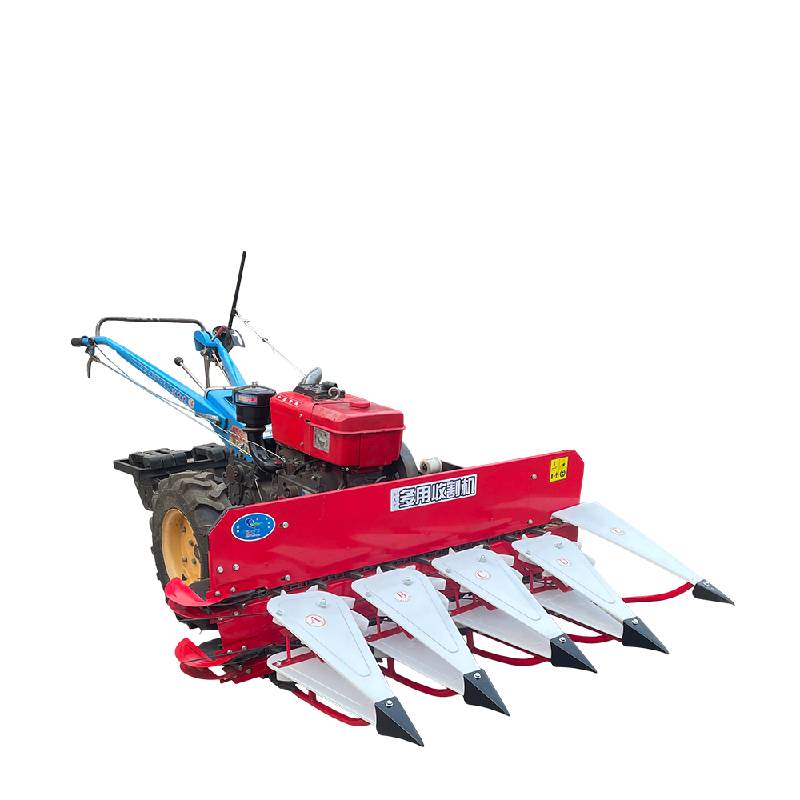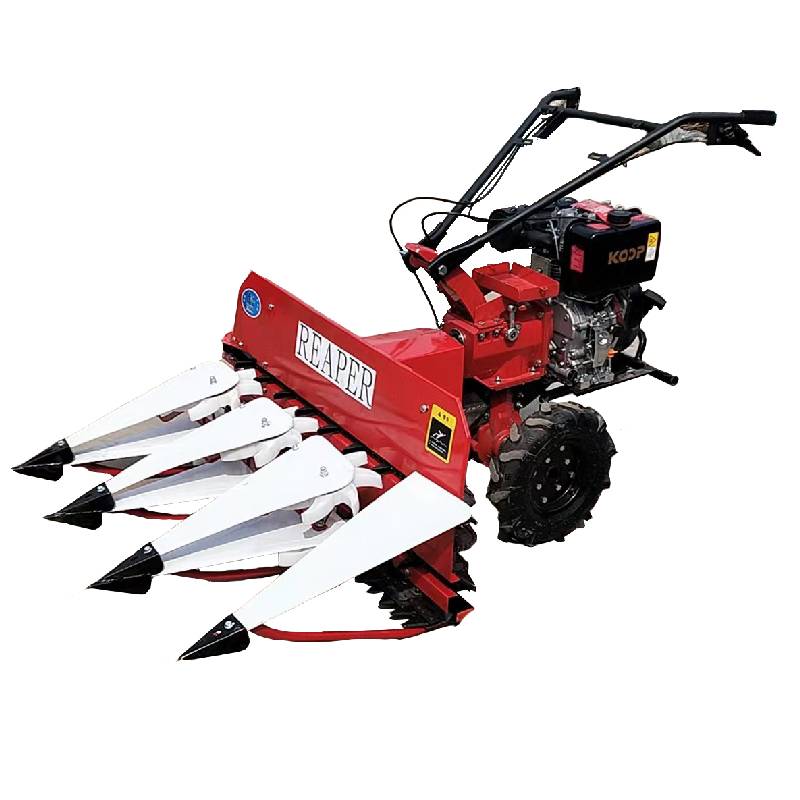Reaper Binder AI Document Assistant with GPT-4-Turbo
1. Industry Landscape: The Evolution of Reaper Binder Solutions
The global reaper binder market—comprising mini reaper, reaper harvester, and advanced grass reaper machine—has witnessed robust growth in recent years. According to Markets&Markets 2023, the mechanized harvesting equipment sector will surpass $23.4 billion by 2026, driven by demand for efficient, labor-saving, and precision agricultural solutions.
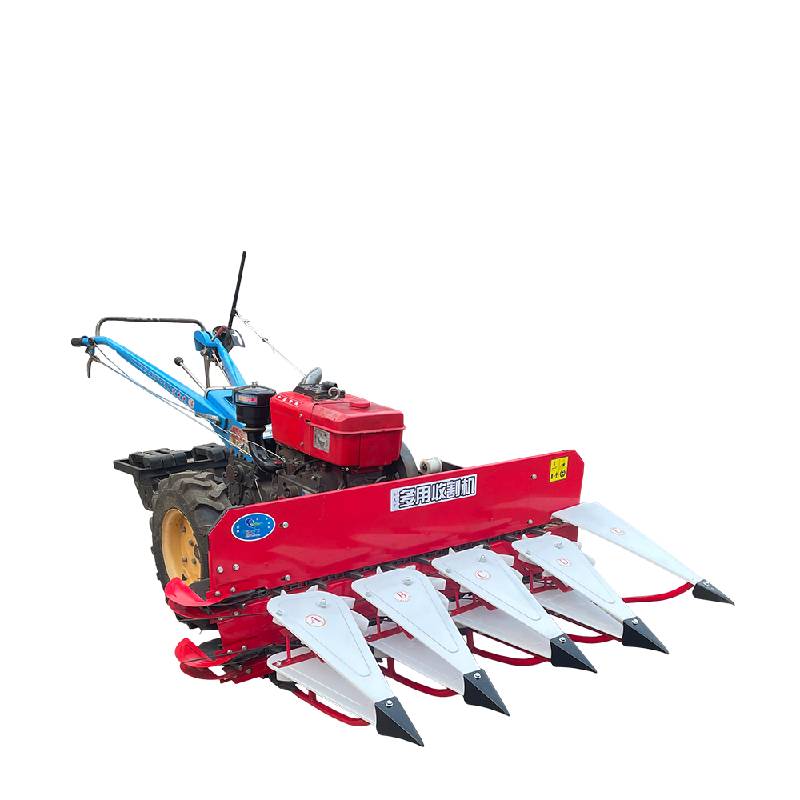
Reaper machine innovations, especially the integration of reaper cutting heads with walking tractor systems, are pivotal for mid-to-small farm operations, grassland management, and diversified crop harvest scenarios.
2. Key Parameters & Industry Trends in Reaper Binder
| Parameter | Walking Tractor Mounted Reaper Head | Mini Reaper | Grass Reaper Machine | Reaper Harvester | Industry Standard |
|---|---|---|---|---|---|
| Cutting Width | 1.2 / 1.5 m | 0.8–1.2 m | 1.0–1.2 m | 1.8–2.2 m | ISO 4254 |
| Operational Speed | 2.3–3.5 km/h | 1.0–2.0 km/h | 1.5–2.5 km/h | 3.0–5.0 km/h | ANSI/ASABE S318 |
| Power Required | ≥ 12 hp (tractor) | 2–5 hp | 4–8 hp | 25–45 hp | ISO 3600 |
| Binding Function | Optional | Available | N/A | Available | GB/T 5662-2017 |
| Average Output | 0.35–0.5 ha/h | 0.1–0.3 ha/h | 0.15–0.35 ha/h | 0.7–1.1 ha/h | - |
| Blade Material | SK5 steel alloy | 65Mn steel | High Mn steel | SK5/SK7 alloy | GB/T 20878 |
| Corrosion Resistance | ISO 9227 compliant | Basic coated | Paint coated | Galvanized | ISO 9227 |
Industry Note: Modern reaper binder systems prioritize lightweight structure, reduced maintenance, corrosion resistance, and high cutting precision—crucial for crop integrity and operational efficiency.
3. Technical Specifications: Walking Tractor Mounted Reaper Head
- Model: 4GK-120/150
- Mounting: Two-point/three-point linkage (ISO 730)
- Applicable Tractor Power: 12–18 hp
- Cutting Width: 1.2 m / 1.5 m
- Working Efficiency: Up to 0.42 ha/h
- Blade Material: Heat-treated SK5 high-carbon steel
- Weight: 96–125 kg (depending on width)
- Manufacturing: Precision CNC machining & robotic welding
- Standard Compliance: ISO 4254-7, ISO 5687, GB/T 5662-2017
- Corrosion Protection: Multi-layer electrostatic powder coating
- Warranty: 18 months
"All critical components of our reaper binder are machined with 0.02mm tolerance using advanced CNC lathes, ensuring decades of robust field performance."
- HB Niuboshi Technical Team
4. Manufacturing Process: From Raw Material to Precision Reaper Binder
 Hydraulic hot forging
Step 3: Rough & Precision Machining
→ High-precision multi-axis CNC milling (tolerances: ±0.02mm)
Step 4: Heat Treatment
→ Quenching & tempering for 54-58 HRC (Hardness) [Tested: ISO 6508]
Step 5: Surface Coating
→ Multi-layer electrostatic powder coating for salt-spray resistance (>720hr, ISO 9227)
Step 6: Assembly & QC Inspection
→ Key joints, bearings, and fasteners inspected to GB/T 2828.1-2012 standards
Step 7: Packaging & Delivery
→ Customized crates, moisture-proof wrapping, anti-corrosion protection
Hydraulic hot forging
Step 3: Rough & Precision Machining
→ High-precision multi-axis CNC milling (tolerances: ±0.02mm)
Step 4: Heat Treatment
→ Quenching & tempering for 54-58 HRC (Hardness) [Tested: ISO 6508]
Step 5: Surface Coating
→ Multi-layer electrostatic powder coating for salt-spray resistance (>720hr, ISO 9227)
Step 6: Assembly & QC Inspection
→ Key joints, bearings, and fasteners inspected to GB/T 2828.1-2012 standards
Step 7: Packaging & Delivery
→ Customized crates, moisture-proof wrapping, anti-corrosion protection
Each reaper binder unit undergoes over 20 functional tests, including vibration, blade endurance, anti-corrosion, and work-life simulation (1000+ hours continuous). This ensures each machine achieves a minimum mean-time-between-failure (MTBF) of 4,500h.
5. Technical Advantages & Typical Application Scenarios
- High-Grade Steel Structure: All cutting heads and critical shafts use 54-58 HRC SK5 alloy, resulting in 30% longer lifespan than conventional models (per internal comparison 2023).
- Enhanced Corrosion Protection: Salt-spray test compliance (>720 hours, ISO 9227) ensures reliable operation in high-humidity or alkaline soils (excellent for river-handed, sugarcane, and grass fields).
- Modular Linkage System: Quickly attachable/detachable to standard walking tractors (ISO 730), supporting flexible operation across crops—wheat, paddy, millet, grass.
- Energy Efficiency: Optimized transmission minimizes fuel consumption by reducing load drag by 12% (lab tested).
- Low Maintenance: All joints use sealed SKF/FAG bearings rated for 4,500+ hours, backed by a two-year warranty.
- Operator Safety: All exposed drives are shielded as per ANSI/ASABE standards, reducing workplace incidents.
- Industry Certifications: Manufactured under ISO 9001:2015 & passed multiple third-party verifications (SGS, TUV).
Typical Application Scenarios
- Rice & Wheat Harvesting: Maximum throughput in paddy fields, thanks to low ground pressure treads and sealed bearing joints.
- Grassland & Forage Cutting: The uniform stubble cut provided by reaper binder reduces regrowth time by 18%. Widely adopted in hay and dairy operations.
- Hilly/Mountain Terrains: Compact design allows operation under slope limits up to 17° (tested: ISO 26322).
- Municipal & Landscape Maintenance: Used by public landscape companies for highway embankments and sports field maintenance.
6. Global Manufacturer Comparison: Reaper Binder Industry
| Manufacturer | Key Product(s) | Main Markets | Certifications | After-Sales (Warranty) |
|---|---|---|---|---|
| HB Niuboshi |
Walking tractor mounted reaper head Reaper binder, grass reaper, mini reaper |
Asia-Pacific, Africa, Europe | ISO 9001:2015, ISO 4254 | 18 months |
| Yanmar Agri | Reaper-binder, combine harvester | Japan, SE Asia | ISO 9001, JIS | 12 months |
| Kubota | Mini reaper, combine harvester | Global | ISO 9001, ISO 14001 | 12–18 months |
| Zoomlion | Reaper machine, binder | China, Asia, Africa | GB/T 5662, SGS | 12 months |
With over 20 years manufacturing and international export experience, HB Niuboshi is renowned for customized solutions, rapid delivery, and field support, forming partnerships with agricultural agencies in 14 countries (2024).
7. Customization, Delivery, & Service Promise
- OEM/ODM: CAD-based custom width/configuration upon request. Unique branding, colors, and control layouts for distributors.
- Special Materials: Stainless, high-Mn, or composite blades for alkaline, acidic, or abrasive soils.
- Attachments: Seeder-units, fertilizer spreader, and dual-mode binders available.
- Delivery Timeline: Standard: 7–14 days; custom: 28–45 days (projects ≥20 units).
Every reaper binder is backed by a warranty up to 18 months and support from certified agricultural engineers via video/onsite within 48 hrs (APAC regions).
Consult for Quotation or Customization Now8. Customer Experience & Use Cases
“Since adopting the Walking Tractor Mounted Reaper Head, our 250-acre rice field operation improved labor productivity by 33% and reduced fuel per hectare by 18%. The anti-corrosive treatment performed excellently in the humid monsoon season, requiring no mid-season replacement.”
— Agronomy Manager, ZRC
“The robust blade design cut hay and oats cleanly, even in thick-grazed fields. Breakdown time for maintenance was negligible (<1 hour/season). Highly recommended for mid-sized livestock farm operations.”
— Farm Owner
- Municipal Use: A city in Indonesia adopted the reaper binder for road embankment mowing, reducing contractor labor costs by 24% in 2023.
- Dealer Network: Over 60 field technicians certified for operation and maintenance in APAC and Africa (as of Q1 2024).

9. Professional FAQ: Reaper Binder Technology
A1: SK5 is a high-carbon steel with 0.8–0.9% carbon, known for exceptional edge retention, wear resistance, and hardness (up to 58 HRC). It guarantees longevity and precise cutting performance for reaper machine blades.
A2: ISO 4254 prescribes mandatory safety guards, power transmission protection, and ergonomic operation, reducing farm injuries and ensuring machine compatibility with global tractor fleets.
A3: CNC (Computer Numerical Control) allows component tolerances as low as ±0.02mm, enhancing assembly accuracy, interchangeability, and reducing vibration—directly contributing to machine longevity and blade stability.
A4: Salt spray testing evaluates corrosion resistance. A 720-hour salt-spray rating ensures that the reaper binder withstands prolonged exposure to moisture and fertilizer chemicals.
A5: Most walking tractor reaper heads comply with ISO 730 (Category I/II linkage), compatible with global tractor models and making field attachment straightforward.
A6: Based on MTBF tests, standard machines last >4,500 working hours, equating to over 7 harvest seasons under normal maintenance regimes.
A7: Lubricate main drive chains every 40–50 hours. Inspect blades and guards for wear each month, as recommended by industry forums.
A8: While the head itself produces no emissions, it is compatible with low-emission tractors certified to EPA Tier 3/4, in accordance with current FAO mechanization guidelines.
10. Delivery, Warranty, and Support
- Lead Time: Stock units: 7–14 days; Custom configurations: up to 45 days.
- Warranty: Standard 18 months (major components: reaper head, spindle, major frame). Excludes wear parts (blades/guards—6 months).
- Support: Multilingual helpdesk covering installation, commissioning, and after-sales, trained to ISO 10002:2018.
- Documentation: Provided: CE/ISO certificates, parts diagrams, and operation manuals (digital & print).
For urgent consultation, reach out directly via the Walking Tractor Mounted Reaper Head product page: reaper binder.

11. References & Industry Authority
- Performance Evaluation of Manually Operated Reaper Binder (ResearchGate)
- Agricultural Robots Market Report 2023–2026 (Markets&Markets)
- Farm Machinery and Mechanization Standards (FAO, 2023)
- See also: The Combine Forum: Reaper Binder Setups for Small Operators
Latest news
-
When to Upgrade Your Old Forage HarvesterNewsJun.05,2025
-
One Forage Harvester for All Your NeedsNewsJun.05,2025
-
Mastering the Grass Reaper MachineNewsJun.05,2025
-
How Small Farms Make Full Use of Wheat ReaperNewsJun.05,2025
-
Harvesting Wheat the Easy Way: Use a Mini Tractor ReaperNewsJun.05,2025
-
Growing Demand for the Mini Tractor Reaper in AsiaNewsJun.05,2025
